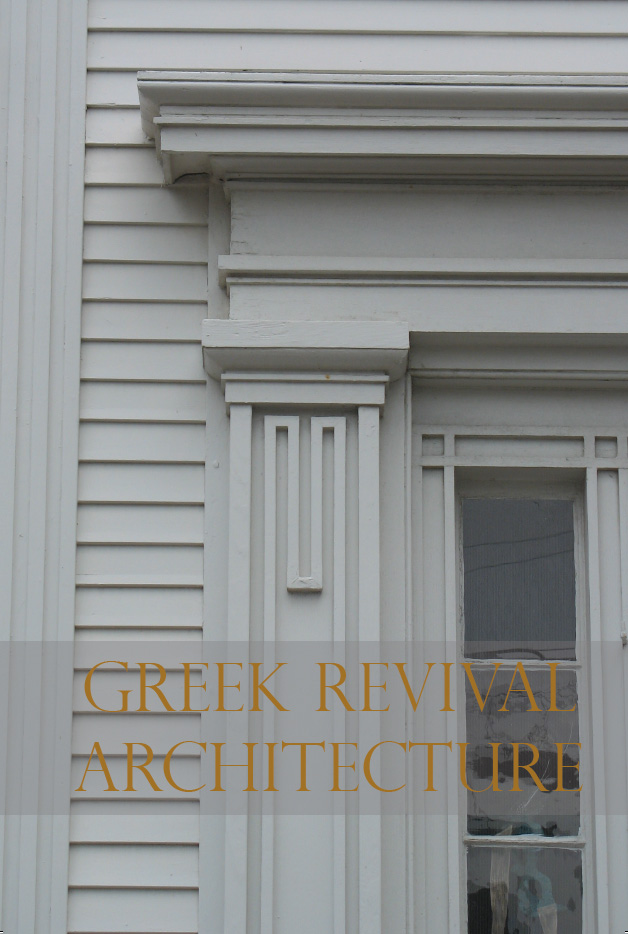 Much of Nantucket’s historic architecture is distinctly Greek Revival—a style that dominated the island during the whaling heydays of the 1830s to the Civil War.
Much of Nantucket’s historic architecture is distinctly Greek Revival—a style that dominated the island during the whaling heydays of the 1830s to the Civil War.
The reason is twofold. Not only was this period the time of greatest expansion and wealth, but when one-seventh of the town burned to the ground, in the fire on July 13, 1846, the early wooden buildings that had served as the whaling port’s commercial heart were rebuilt in the architectural fashion of the time, namely Greek Revival.
Classical Roman architecture, the basis of Georgian and Federal architecture, had influenced architecture in the late eighteenth and early nineteenth centuries, but after the War of 1812, the island as well as the entire nation turned away from many British customs. Greek Revival architecture was embraced as the predominant national style, and Nantucket followed suit. While the Greek War of Independence raged in the 1820s and 30s, American admiration for the Greek people grew dramatically, as did adoption of the Greek Revival style. Public buildings, banks, and private houses from the East to the Midwest used elements of the style for both new construction and updating older buildings.
During the second quarter of the nineteenth century, examples of both high style and the vernacular were found. On Nantucket, the earliest examples of the style are considered transitional Federal and Greek Revival. These include some of the island’s best known buildings such as the Three Bricks, and the Henry and Charles Coffin houses on Main Street. The center hall plan of these houses is similar to earlier Federal houses, but the elaborate doorways, high granite bases, and stretcher-bond brickwork are associated with the Greek Revival. The most elaborate Greek Revival houses are of course 94 and 96 Main, known as “the two Greeks.” They were designed by Frederick Brown Coleman, and both feature colossal porticos. The house at 94 Main is the more refined example, employing dentils, modillions, and Corinthian columns.
Coleman is credited with changing the appearance of the island more than any other single person. Among his other fine work is the portico of the Methodist Church (c. 1840), the Summer Street Church, and the Atheneum—with its temple form and monumental Ionic columns.
The style, however, is associated not only with those impressive building. Everywhere you look in the old historic district Greek Revival elements can be found. Among the most common elements was the use of a Greek Revival doorway framed by broad, flat pilasters void of elaborate detail, with a simple base and crowned by a flat-and- broad entablature. Transoms above the door replaced the fanlight of the Federal period (Greek architecture does use an arch) and sidelights were introduced to enhance the opening and provide the entry with additional light. The Federal six-paneled door was often replaced by two narrow upright panels or a door with two upper vertical panels and two to three lower horizontal panels. In homes of successful merchants, whaling captains and tradesmen more decorative features are found at the doorway— such as dentil bands, fluted columns, and Ionic or Corinthian capitals and the Greek key design as well as other classical details.
One of the most characteristic moldings found throughout Greek Revival houses is a flat splay or bull-nose molding that is rounded under at the outer edge. This molding was commonly used in the exterior cornice, interior doorway and window trim, as well as to encase door panels. Corner blocks on interior door and window frames are widespread throughout the town and were often decorated with bull’s eyes, or in more elaborate buildings, acanthus leaves.
One of the most dramatic changes to occur during this period was the orientation of the house. On many Greek Revival houses the gable end becomes the main elevation and faces the street. This temple form was often emphasized by the use of a protruding entablature or cornice that formed a pediment in the upper “attic” story. In many cases, elaborate window shapes such as bull’s eye, lunette, or elliptical-shaped lights were employed to give individuality to the house. In smaller buildings, the entablature was removed and returns added. Second-floor windows replaced the elaborate gable-end window at the peak. Pilasters were often found at the corners of these houses for decoration and to emphasize the verticality of the “Greek” temple.
For those who wish to learn more about the architectural features of the Greek Revival style and other architectural terminology, we recommend participating in the Main Street walking tour.


